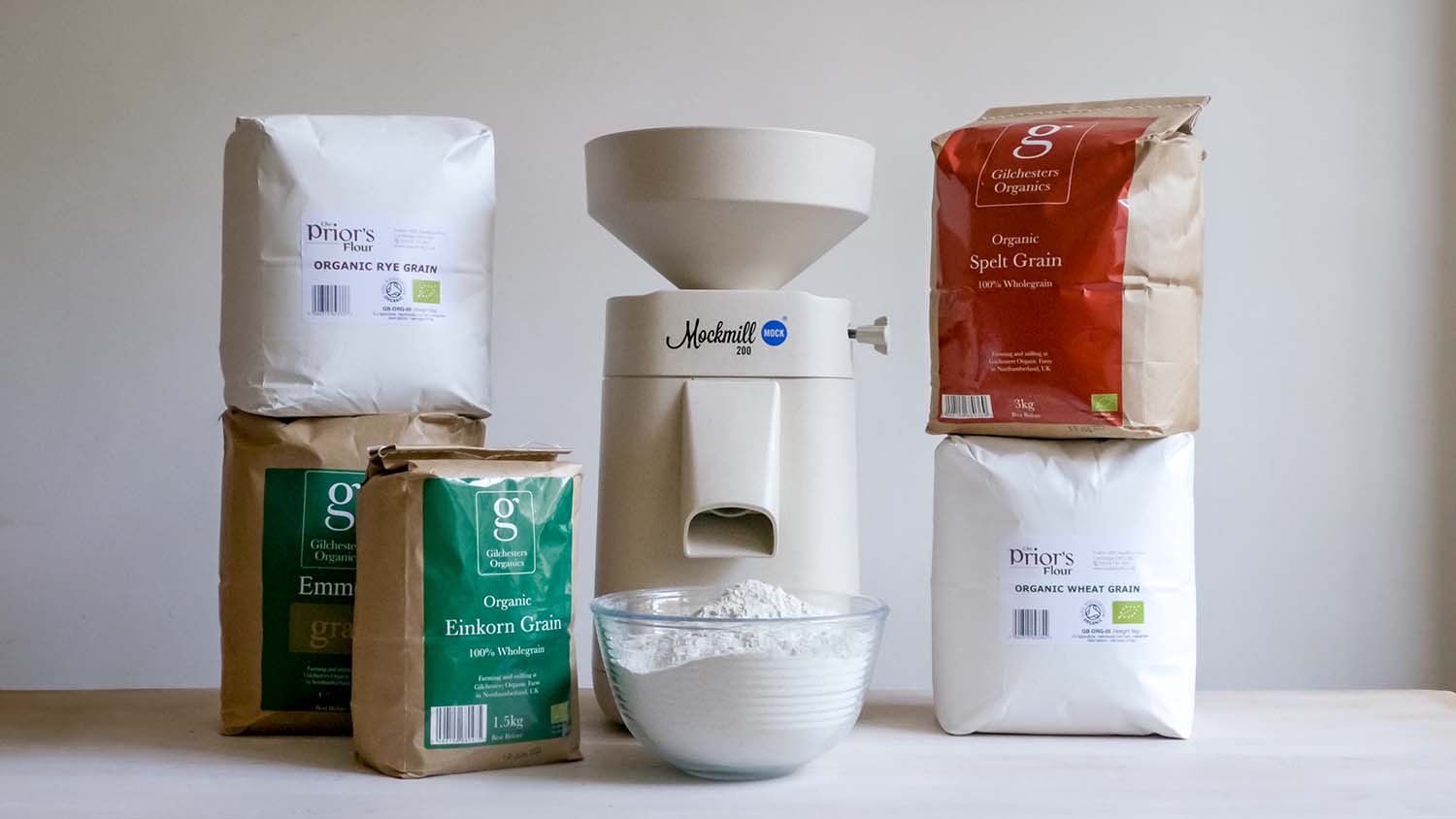Hello bakers! I’m hoping your frazzled lives are calming down in this new-normal Britain, kids are back to school this week, and parents are telling me that some personal ‘quiet time’ has returned. With cooler autumn days ahead, and the joys of winter comfort eating not so far away, I’m also thinking ‘can I eat better, wiser, more responsibly, while regularly munching on grilled melty cheese sandwiches?’ (my doc says no, sadly).
So my ‘supercharge the diet’ plan, starting with fewer grilled cheese combos and more vegetables, is to add more wholegrains to my breadmaking and diet, get back to sprouting seeds, and use more varied and unusual flours. And then BakeryBits’ founder Patrick said, ‘look, it’s not long till Christmas, get yourself a Mockmill’.
Bespoke milling is the hottest must-do in artisan baking today, and a Mockmill – a tabletop electric grain mill – allows you to mill exactly what you want, when you want it, giving you the ultimate control over the choice of grains – what millers call the grist, as in the saying ‘grist to the mill’ – that will become your flour.
You can also choose the particle size your grains will be milled too, and this gives you loads of creative scope to plan the impressive crumb-shot that will get friends saying, ‘how did you achieve that?’. Say you’re after a fine, bubbly sourdough wheat crumb, but you want it to have flecks of silvery rye grain through it, and slightly coarser bits of ancient emmer wheat; the complex flour mix for this is achievable in minutes with the Mockmill.
Healthwise, will it give you the ultimate superfood loaf? Yes and no. Though it will release a flood of micronutrients many will be lost in the baking process; oxidation, heat degradation, and even the sourdough fermentation process can all take their toll. Generally, many flavonoids and polyphenols decrease with baking, but one, a chemical, phenolic acid, found in the bran of wholegrains like emmer, spelt, and dried fruit – the reason we can hold up our oatmeal raisin cookie and cry ‘it’s virtually a health supplement in a bickie’ – is thought in some (not all) studies to keep its nutritional value after baking. Overall, compared to a white flour loaf, one made with freshly milled whole grains will have micronutrient benefits, just not the whole kit and caboodle.
The other big boost a Mockmill gives your baking is in increasing the grain-based flavours available.
See, the thing is that when flour has sat in the cupboard a long time many of these flavour compounds, found abundantly in freshly-milled flour as they also make up part of what we think of as micronutrients – see, bet you didn’t know that nutrients can be flavours too – will fade as flour ages. So, by milling grains freshly and either using the resulting flour entirely to bake a loaf (and to feed your sourdough starter) or mixed with your favourite white bread flour to maintain a light, aerated loaf, you will hugely boost the flavour, crumb colour and aroma of your bread. And don’t stop at bread, using your own freshly milled flour combined with regular white flour in pastries (both sweet and savoury) and cakes will help you achieve an unbeatable signature flavour that will be yours alone, and build on the flavours of the other ingredients you take care in using.
I asked the legend himself, inventor and founder Wolfgang Mock, ‘what still keeps you excited when people use your mill?’. He told me, ‘there’s something incredibly liberating and empowering that happens when a baker chooses the exact grains and seeds that get milled into their flour, quickly and easily. That’s the magic of the Mockmill that still, after nearly 50 years, keeps bakers like me and you using it’. I might feel today that my baking is pretty much on-point, but I can still see a tantalising next-level to take it to. If you’re like me, a Mockmill might be exactly what you need to achieve that.














